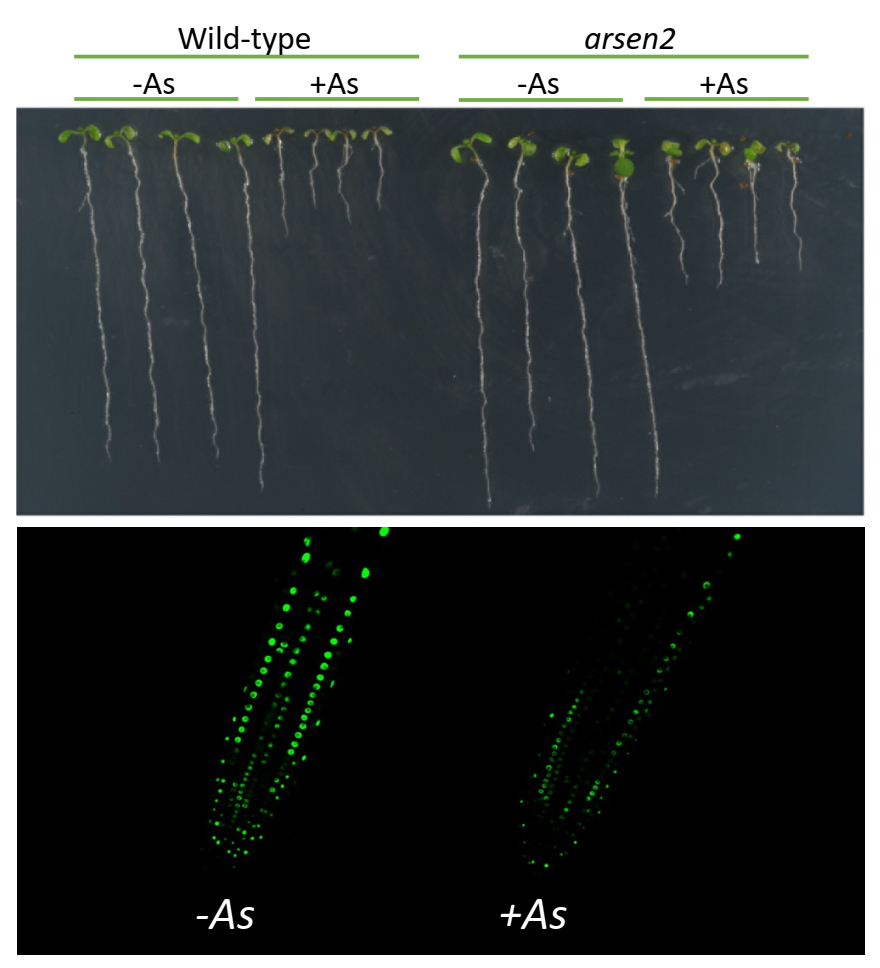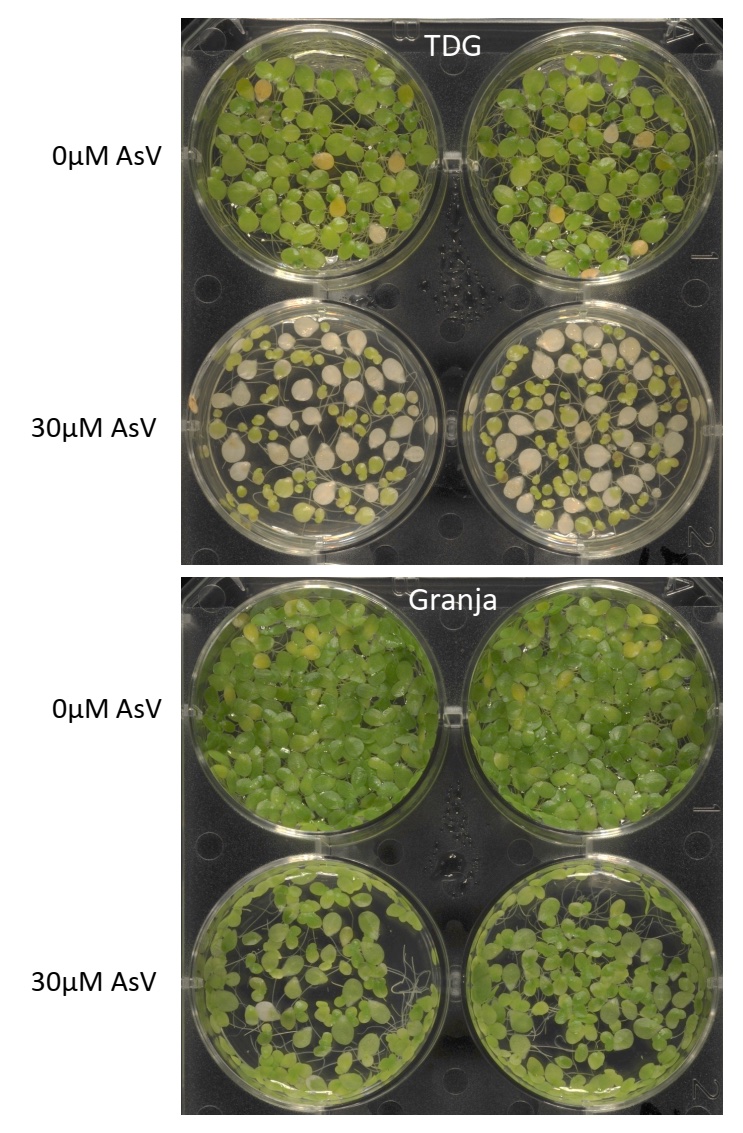Arsenic Phytoremediation & Tolerance in Plants
RESEARCH GROUP

Antonio Leyva
Group Leader
Research Summary
Climatic models predict the sudden availability of toxic compounds in the biosphere. Among all toxic compounds, the presence of arsenic in soils and waters is particularly serious in rice, being the most important entry of arsenic in the human food chain. In our laboratory, we are involved in the characterization of the molecular mechanisms underlying arsenic perception and tolerance in plants. Currently, we are identifying crucial regulators of the arsenic response, as novel integrators of arsenic detoxifying mechanisms with developmental outcomes (Figure 1), offering insights for developing safer crops with reduced arsenic content and increased tolerance to this hazardous metalloid. In addition, we are currently performing a study of the natural variation of phytoremediation capacity in a collection of duckweed natural isolates from the Iberian Peninsula (Figure 2).
Research Lines
Plants have an extraordinary capacity to capture large quantities of nutrients and toxic compounds including heavy metals and arsenic. Arsenic can enter into the food chain through water consumption or crops (particularly, rice) and therefore is considered a silent threat to public health. For the last two years we kept working on the characterization of the molecular mechanisms involved in arsenic perception and detoxification. This research line is founded by the Ministerio de Ciencia, Innovación y Universidades (PID2020-112891RB-I00) and the travel grant ILINK23031. This research project is running in collaboration with Joan Chory from the Salk Institute for Biological Studies and José Pruneda from the University of California, both in La Jolla, California.

Figure 1.- ArSen2 is a crucial repressor of the arsenic response. (Upper Panel) ArSen2 mutant (arsen2) exhibits an arsenic tolerance phenotype (upper panel). Wild-type and Arsen2 KO mutant plants (arsen2) were grown on MS vertical plates with (+As) or without (-As) arsenite. (Lower Pannel) Arsen2 is down regulated in response to arsenic. Confocal microscopic analysis of Arabidopsis plants expressing the ArSen2 tagged with GFP with or without arsenite (As).
The excess of nutrients present in coastal areas and river basins derived from the massive use of fertilizers in agriculture is responsible for the pollution of a large portion of waters in the world. This research initiative explores the utilization of small aquatic plants from the Lemnaceae family, commonly known as duckweeds, which exhibit exceptional phytoremediation capabilities. Additionally, duckweed is considered as an alternative crop with biotechnological potential due to their rapid vegetative growth, along with their rich protein and carbohydrate content. The goal of this project is to investigate the genetic diversity of duckweeds. We are currently assembling and characterizing a collection of natural duckweed accessions from the Iberian Peninsula, gathered from a wide range of altitudinal and climatic conditions. This collection will undergo comprehensive genetic and physiological analysis to evaluate phytoremediation capacity, growth potential and biomass production. Once fully characterized, this duckweed collection will be made publicly available, fostering innovative, sustainable methods to combat water pollution and restore both natural and agricultural ecosystems. Moreover, it will pave the way for the development of novel bioproducts, contributing to circular economy models. This research line is currently funded by the Ministerio de Ciencia, Innovación y Universidades (TED2021-130899B-I00).

Interspecific differences in arsenate (AsV) tolerance between L. minor (Granja) and L. gibba (TDG). The accessions of L. minor and L. gibba were grown in SH medium with or without 30 µM AsV for 20 days.
Publications
Group Members
Group Leader
Antonio Leyva
Staff Scientist
Cristina Navarro
Lab Assistants
Yolanda Leo del Puerto
Sara González

Funding
News
Identificado un nuevo factor clave en la tolerancia a arsénico en plantas
10 de septiembre, 2024 La presencia de arsénico en los suelos reduce el desarrollo de las plantas y produce graves pérdidas económicas en la agricultura. Un equipo del CNB-CSIC identifica el factor de transcripción GLABRA2 como un nuevo regulador de la tolerancia al...




